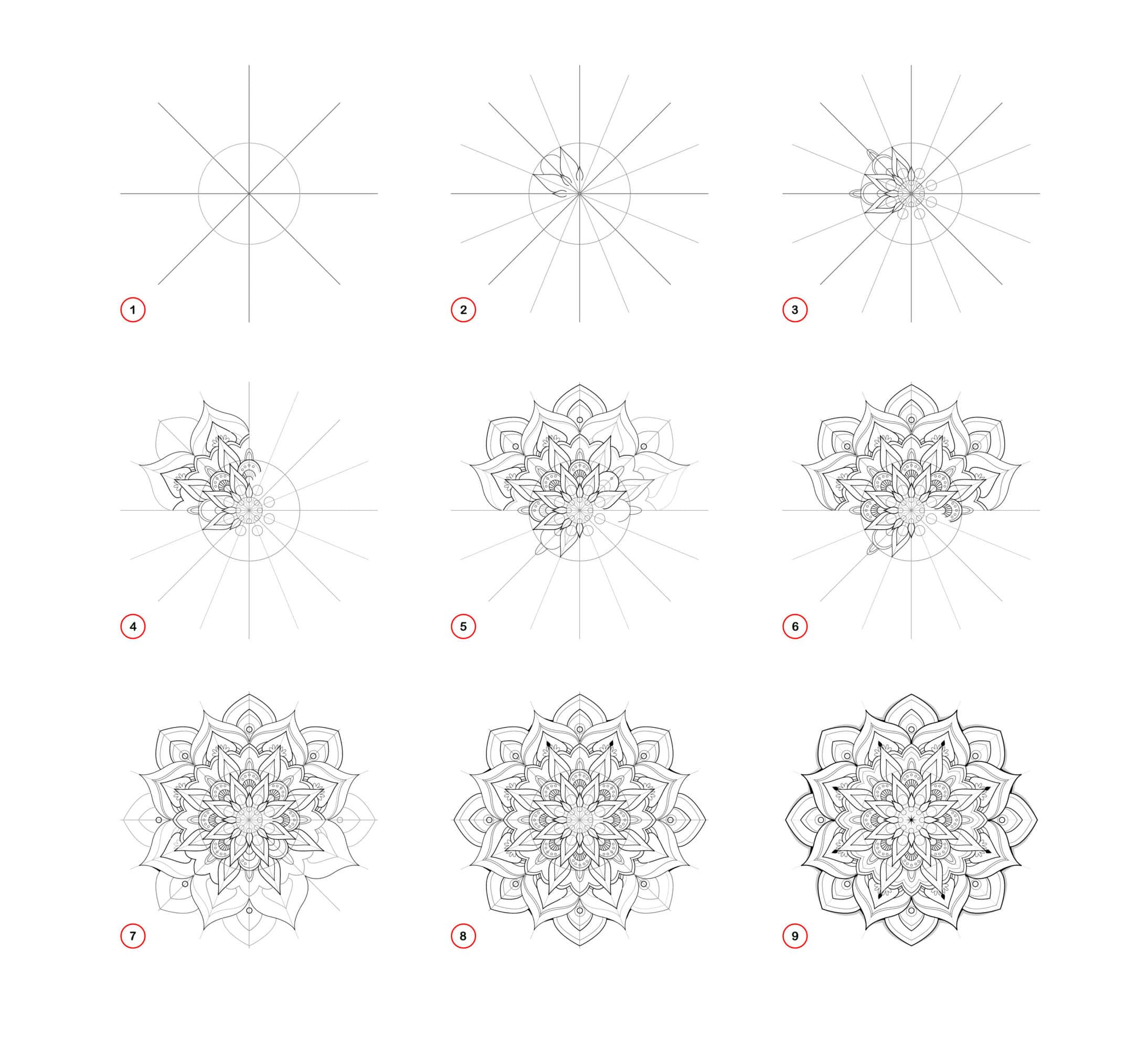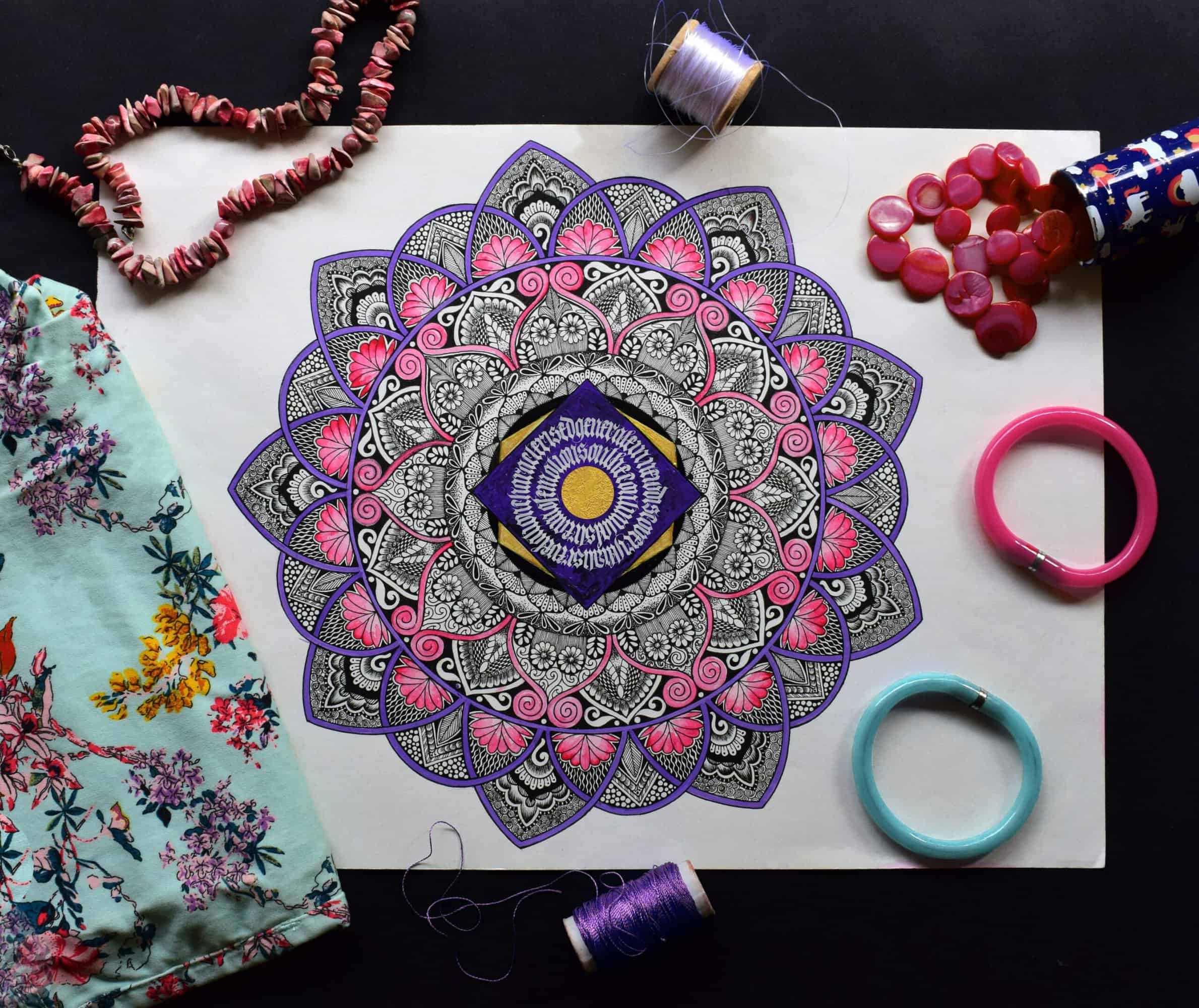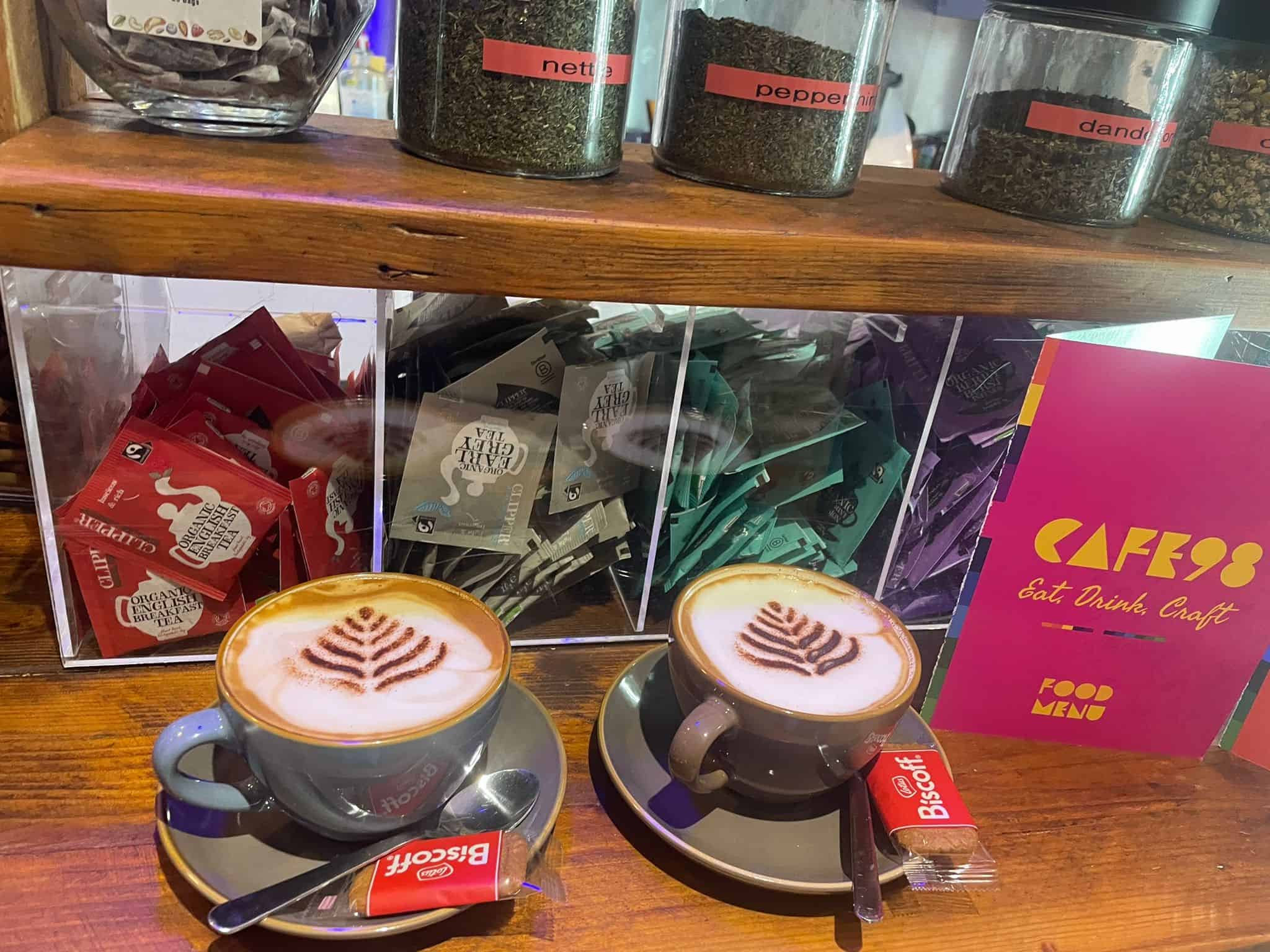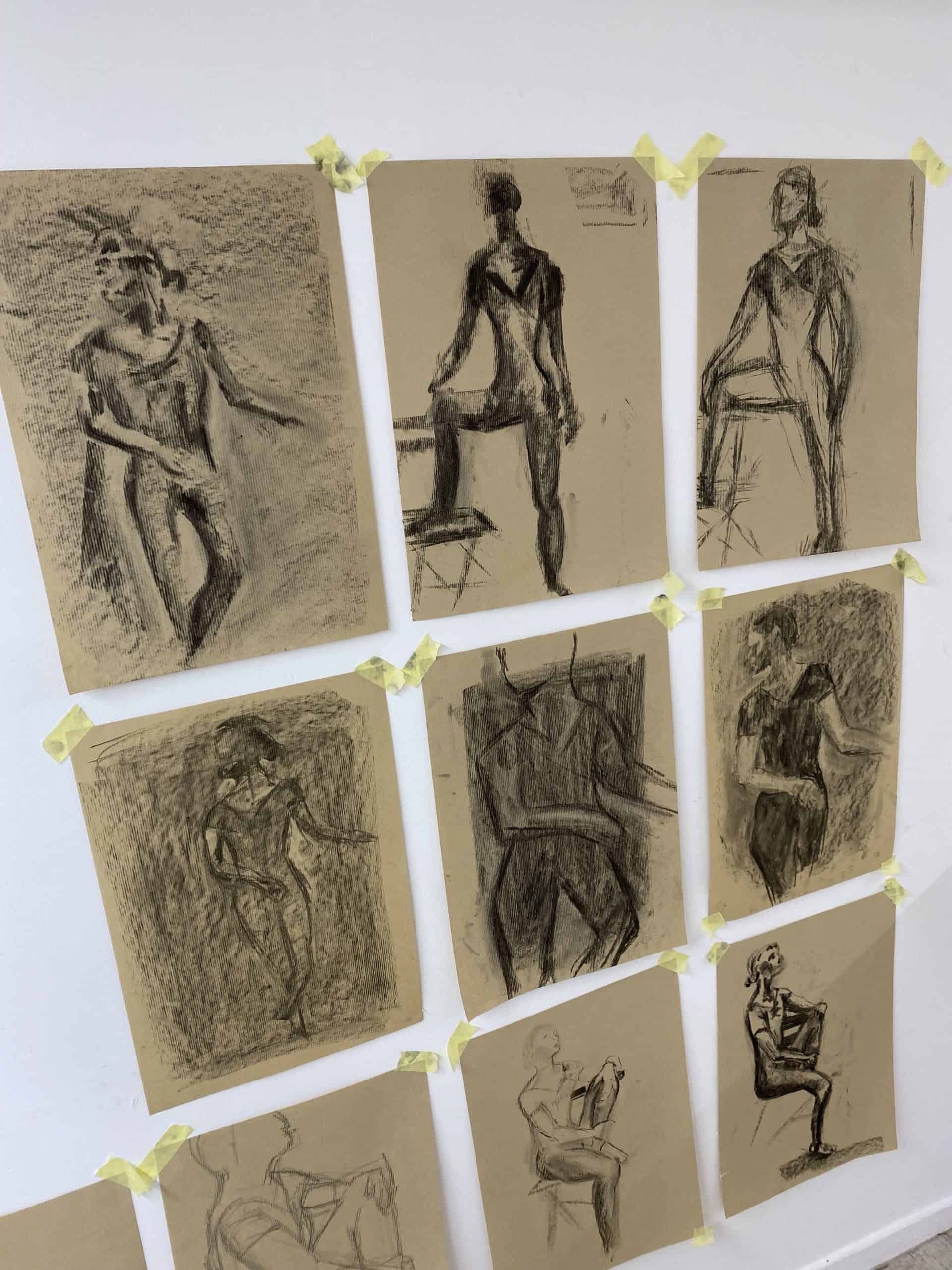The Allure of Mandala Art: Geometry, Spirituality, and Creativity
Mandalas, with their intricate designs and symmetrical patterns, have fascinated hearts and minds for centuries. Rooted in ancient traditions and spanning various cultures, mandala art is more than just visually pleasing; it’s a journey into oneself and the universe. Let’s explore the mesmerizing world of mandalas, understanding their significance, origins, and the therapeutic power they possess.
What is a Mandala?
Mandala is a Sanskrit term that means “circle”. Fundamentally, a mandala represents wholeness, unity, and harmony. Although it typically begins with a central point and expands outwards in a circular pattern, mandalas can be filled with a plethora of designs, symbols, and colours.
Historical and Cultural Significance
Mandalas have ancient roots, tracing back to Indian spiritual traditions. They play a crucial role in Hindu and Buddhist rituals, symbolising the universe, spiritual journeys, and meditative paths to enlightenment.
Outside of the Indian subcontinent, similar patterns and designs can be found in various cultures:
- Native American Cultures: Medicine wheels and dreamcatchers, resembling mandalas, were employed for healing and protection.
- Christianity: Rose windows in Gothic cathedrals, with their detailed stained glass, echo the aesthetics of mandalas, signifying spiritual importance.
Therapeutic Power of Mandalas
Carl Jung, the Swiss psychiatrist, introduced the West to the therapeutic potential of mandalas. He believed that drawing and colouring mandalas allowed individuals to connect with their subconscious and address inner conflicts, leading to personal growth and self-awareness.
Today, mandala art therapy is a popular technique. Creating or colouring mandalas can:
- Reduce stress and anxiety
- Enhance focus and concentration
- Foster creativity
- Promote a sense of well-being
How to Create Your Mandala
Embarking on your mandala art journey is both straightforward and deeply personal. Here’s a basic guide:
- Start with Intention: Before drawing, take a moment to set an intention or purpose for your mandala.
- Centre Point: Begin with a dot or small circle in the middle of your paper.
- Expand Outwards: Using a compass or freehand, draw larger concentric circles. Fill them with patterns, symbols, or anything that resonates with you.
- Choose Your Colours: Colours can carry symbolism. For instance, blue might represent calmness, while red can symbolise passion. Let your intuition guide you.
- Enjoy the Process: More than the final artwork, the act of creating is where the magic lies. Immerse yourself in the experience and let go of perfection.

Mandalas in Modern Life
Mandala patterns have woven their way into various aspects of modern life. From adult colouring books and tattoo designs to architecture and fashion, their charm remains timeless.
Mandalas are more than intricate patterns; they are a union of geometry, spirituality, and self-expression. Whether you’re drawn to them for their beauty, spiritual significance, or therapeutic benefits, engaging with mandala art can be a transformative experience. In a world that often feels chaotic, mandalas offer a sacred space of balance, symmetry, and harmony. Embrace the circle and let your creativity flourish.

RELATED
WORKSHOPS
Date
Title
Course Category
All
A-Z
All things paper
Christmas 2023
Clay
Crochet
Drawing and painting
Easter
Evening events
Fabrics and textiles
Film
Floristry
Food
Home and garden
Jewellery, glass and mosaic
Kids
Kids Sewing
Mandala
Mandala
Music, film & writing
Painting
Photography
Photography
Photography, Pottery & Printing
School Holidays
Length
All
12 weeks
2 day
2 weeks
3 months
3 weeks
4 weeks
5 week
6 weeks
7 weeks
Single session
Event Tutor
All
Ali Penn
Alison Cottridge, Thermomix Advisor
Ally Bayman
Amanda Brame
Amy Ford
Angelique Samadi
Annie Nelson - Yoga Teacher and Nutritonist
Barbara Brooks
Barry Dring
BarTop
Bean And Boy
Bronwyn Oldham
Caroline Burkett
Caroline Elman
Catherine Thornton
Charlotte Hamilton
Cheryl Glassock
Christine Absalom and Jules Easlea
Christine Nicholls
Christine Wyatt and Stephen Lee Disney
Claire Hankey
Claire Hankey and Amanda Brame
Clarissa Debenham
Clio Sigismondi of Black and Sigi
Coral Lucetta Creations
Create98
Damian Smith
Danna Wright - Prabaya Organics
Daryl Easlea
David Lintine
Deb Hart
Debbie Hadley
Dee Curtis
Dionne Boatman
Ellie and Leah - Flowers By Cosmos
Emily Lynam of Yougi
Emily of Tempered Peach
Emma Fettroll
Emma Flack
Essy Makes
Farida Kamruddin and Natasha Manley
Fern Worsley
Gaynor Edwards
Gemma Grosvenor
Gina Griffin
Hannah Brailsford
Hannah Faraway
Hannah Frost
Hannah Geddes
Heather Cooper
Jacqueline Smith
Jaime Fernandez
Jake Bussell
James Wall from Behind The Bar
Jan Vincent
Jane Cheshire
Jane High
Jane Piper
Jane Seabrook
Jessica Chloe Head
Jo and Rachel of Table Stories
Jo Bolter
Jo Overfield
Josie Moore
Jude Raphael
Judith Lyall
Judy Goring
Julie Ford
Karen Apps
Kate Bent
Katrina Kieffer-Wells
Kerry Doyland
Kim Davey
Kirstie Bird of Ink and Flow
Laura Gualtieri - Healing Diets Coach
Lauren Stranks - LittleLeighStitchery
Lavina Chandwani
Léda from EDIGUMI Arts and Crafts
Leigh-on-Sea Supper Club - Susan Davies
Lisa Castle
Lisa Meehan
Little Adventures with Dough
Liz Bleach
Liz Casey - Metal Lust Jewellery
Lizzie Bridge
Lizzie Ireland
Lola Swain
Lottie of Wild Orchard Sewing Co.
Louise Swain and Max Levy
Mac and Mini
Marie of Freckled Acorn Designs
Marisa Tait - HNDMD
Mark Bradford
Mel at the Mighty Mindcircus
Michelle Goldman
Michelle Passfield
Michelle Passfield, withMichelle
Morissa Thorn
Nicole of Knots and Dreams
Olha and Dina
Osborne's
Owen Richards
Pamela Print
Paul and Chris Laurie
Peter Goddard
PlantBase Leigh-on-Sea
Rachel Begley
Ray Spencer
Reanna
Richard Kurti
Richard Kurti and Sam Lierens
RooCakes
Ruth Martin
Sally Chinea
Sarah Croud
Sarah Goodwin
Sarah Howson
Sharon Henson
Simon Fowler
Susan Allen
Susan Davies - Eat-Well Group
Tash Manley - Calligraphy by Tash
Tempered Peach
The Kilted Cooks
The Kilted Crafter
Tom O'Callaghan
Tracey Peacock
Tracy Spurgeon
Tracy Spurgeon and Suzanne Moss
Tyra of Queen T Cookies
Vanessa Bradford
Vino Vero
Zoë Rodgers Beaumont
Event Tag
All
Xmas 2023
After school clubs
YOU MAY
ALSO LIKE

The Wonderful World of Coffee at Create98 in Leigh-on-Sea
Whether you are visiting Create98 for an arts and crafts workshop or simply to unwind, knowing your coffee can enhance your experience. Let’s break down the differences between some popular coffee types you might enjoy during your next visit.

Discovering Leigh-on-Sea’s Best Coffee Shop (in our opinion!)
Nestled in the heart of Leigh-on-Sea, a quaint yet vibrant corner of Essex known for its bustling high street and picturesque seafront, is a treasure trove for coffee enthusiasts and art lovers alike: Create98.

Why Life Drawing is a Must for Every Artist
Explore why life drawing is essential for enhancing our artistic technique and why we should cast aside any sense of embarrassment.

